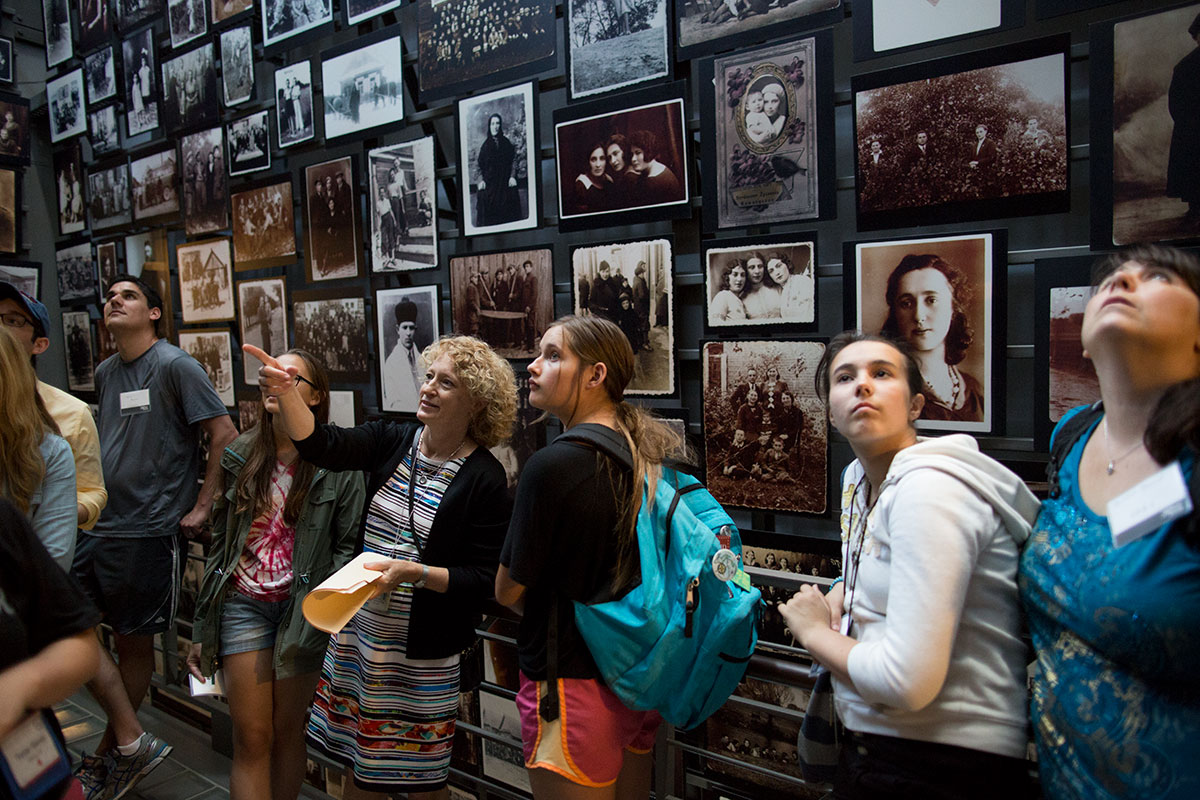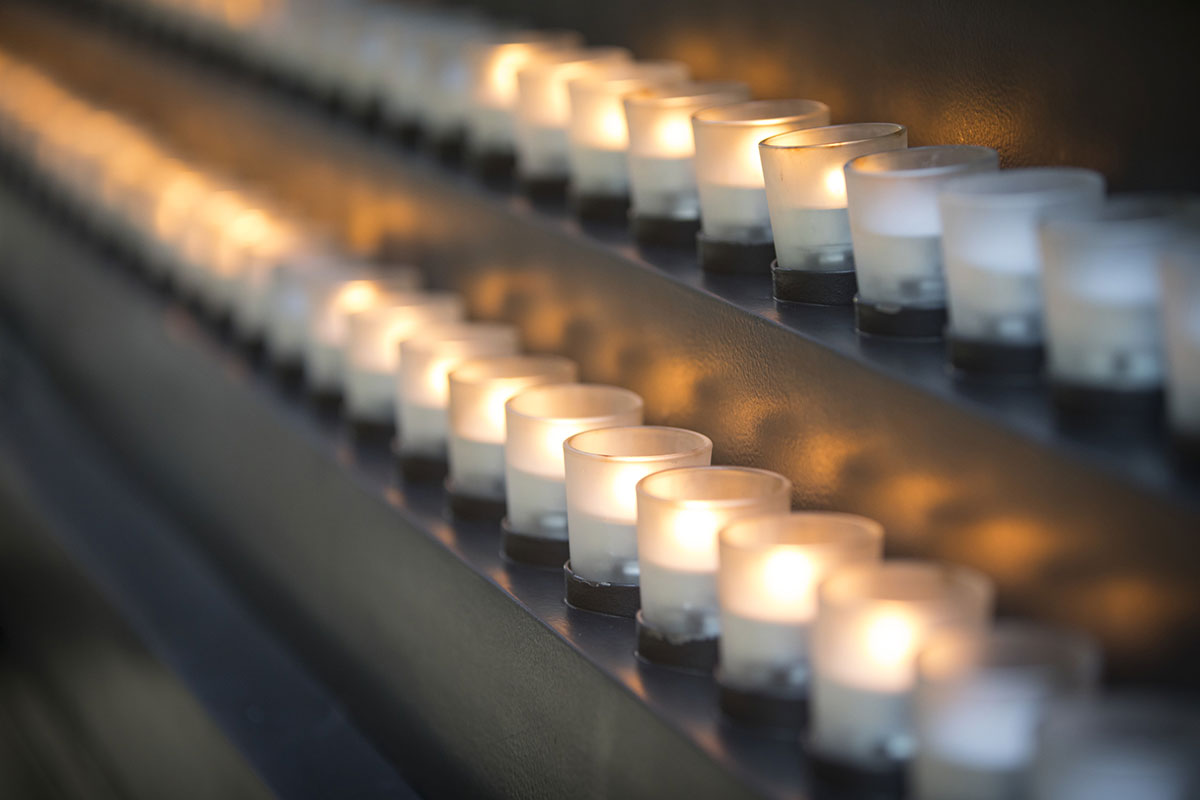“We should never think that it is finished. With imagination, with passion, with fervor, begin again. it’s up to you now that my past does not become your future.” —Elie Wiesel
Our nation and the world have changed dramatically since the Museum opened. We must respond to these challenges by protecting the truth and ensuring the relevance of the Holocaust for new generations worldwide. Our role is crucial (read about Our History and Mission) and this Strategic Plan is the roadmap. Explore our strategic priorities:
- Our Iconic Exhibition
- Our Collection
- Holocaust Education
- Holocaust Scholarship
- Genocide Prevention
- Our Global Role
- Our Values and Institutional Plan
Our Iconic Exhibition
We must revitalize our primary educational tool, our core exhibition, to ensure its relevance for future generations from all walks of life, going beyond what happened, to advancing understanding of how and why the Holocaust happened.
Our Collection
We must counter the challenges that threaten the basic truth of the Holocaust by strengthening our massive collection of authentic evidence of the crime and making it globally accessible to anyone, anywhere. This is foundational to advancing education, scholarship, awareness, and understanding among college and secondary students, faculty and teachers, researchers, and the global public through use in exhibitions, publications, resources, programs, and social media.
David M. Rubenstein National Institute for Holocaust Documentation
Strengthen the collection of record and making it globally accessible so that the history and memory of the Holocaust will endure.
- Significantly improve and increase access to the collection
- Align RNIHD’s collecting priorities with the needs of the field of Holocaust Studies, the Permanent Exhibition revitalization and its themes, and the Museum's memorial role
Holocaust Education
We must play a leading role in shaping the field of Holocaust education by setting standards, demonstrating the relevance of the Holocaust, supporting learning about how and why it happened, and encouraging audiences to think critically about their roles and responsibilities today. We must reach audiences who can influence the present and shape the future: emerging adults, professions that were key to making the Holocaust possible and whose role is to ensure the life and liberty of individuals in democratic societies (the military, judiciary, and law enforcement), and others with influence.
William Levine Family Institute for Holocaust Education
Serve as the global leader establishing the relevance of the Holocaust.
- Engage audiences to inspire critical thinking
- Strengthen the field to improve the quality of teaching and learning
- Conduct research to understand the relevance of Holocaust history for our priority audiences and assess the quality of teaching and learning
Holocaust Scholarship
We must promote a vital international field of Holocaust Studies to ensure that our work of education and documentation and that of other like-minded institutions can continue to rely on an unshakable foundation of the most rigorous scholarship. The future of the field depends on the constant examination of new questions about the subject from a wide variety of academic disciplines.
Jack, Joseph and Morton Mandel Center for Advanced Holocaust Studies
Ensuring the field of Holocaust Studies remains vital.
- Expand and steward a global community of diverse partner institutions and lead results-based conversations about the future of the field
- Increase global access to authoritative scholarship and sources in order to improve and secure research, teaching, and education
- Integrate Holocaust studies with other fields and enable Holocaust studies to be viewed and taught through a multitude of lenses
Genocide Prevention
We must continue to pursue the ultimate challenge: doing for victims of genocide today what was not done for the Jews of Europe. Our moral authority and role as America’s national Holocaust memorial give us the unique ability to promote a world where leaders, communities, and institutions take action to prevent or halt genocide. We aim to advance a sustainable focus on genocide prevention across presidential administrations and to inspire and equip policymakers at all levels of government.
Simon-Skjodt Center for the Prevention of Genocide
Promoting a world where leaders, communities, and institutions take action to prevent or halt genocide and related crimes against humanity and support justice for these crimes.
- Elevate the priority given to atrocity prevention in US foreign policy for the long term
- Address gaps in foreign policy and atrocity prevention analysis and provide expertise, tools, and recommendations where the Center can have the greatest impact
- Build the next generation of bipartisan foreign policy leaders who understand the history of the Holocaust, their role in atrocity prevention today, and the tools and approaches available to them
While all these challenges are growing, so is demand for our work: Teachers, school administrators, and university and college faculty across the United States are seeking our help. Parts of the Middle East, where once the Holocaust was denied or celebrated, are increasingly interested in pursuing Holocaust education. More leaders recognize that, just as in the Holocaust, there are warning signs for genocide that can be heeded. This demand is crucial because the Museum cannot address these challenges alone.
Our Global Role
We must solicit and strengthen the commitment of governments in the lands where the Holocaust happened and beyond. We must work with partners of all kinds—not only governments, multinational organizations, and Holocaust institutions and sites, but others, such as the American Library Association, FBI, military service academies, State Department, US Institute for Peace, International Holocaust Remembrance Alliance (IHRA), European Holocaust Research Infrastructure (EHRI), and UNESCO.
Office of International Affairs
Raising the Museum’s international profile and creating an enabling environment for its mission.
- Establish a consistent and leading Museum presence with major international governments and in multilateral organizations to demonstrate the relevance of the Holocaust
- Cultivate the creation and strengthening of government-enabled Holocaust-related organizations
- Conduct policy and regulatory research and analysis that will influence government approaches to secure Holocaust memory, understanding, and relevance
Our Values and Institutional Plan
The visionaries who built such a singular institution laid the strong foundation that enables us to take on these enormous challenges 30 years later. The Museum’s federal status, international stature, global reach, deep expertise, and broad public trust make it uniquely suited to pursue our aspirations. Our staff, supported by many partners and guided by our institutional values, will fulfill this ambitious plan, and we must continue to invest in them. As a young institution with profound obligations, we must also build the infrastructure to support our work for the long term.
The survivors fervently believed the Museum would serve as not only a lesson and a warning, but also an inspiration. Their conviction about the power of memory animates this bold vision for our future.









